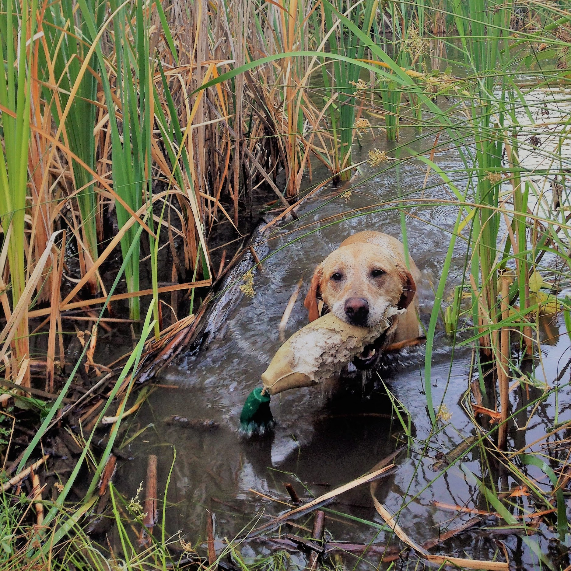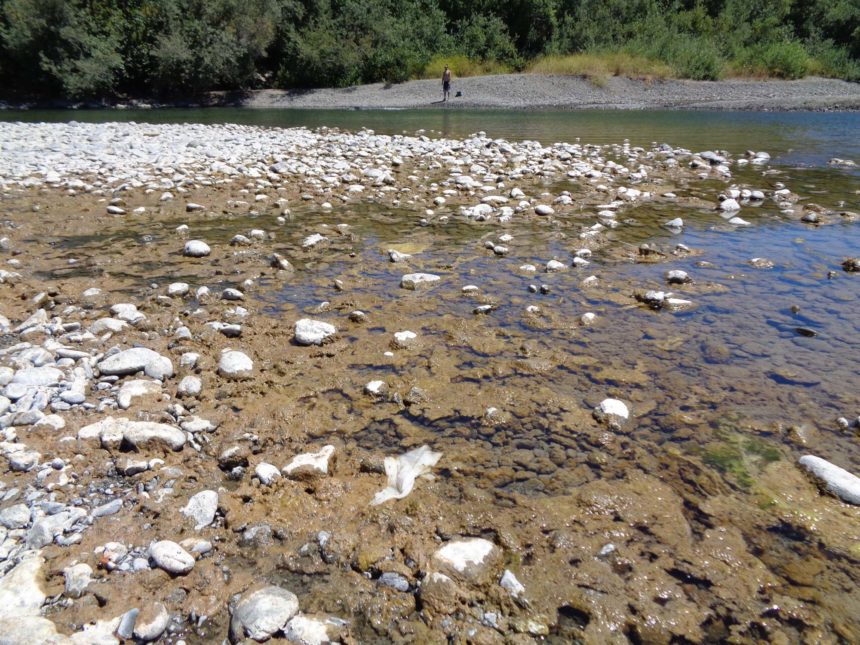
Sep 10, 2018
Keeping your dog safe from harmful algal blooms

(Reprinted from the Fall 2018 issue of California Waterfowl Magazine)
BY BECKYE STANTON and REGINA LINVILLE

Click here to download a visual guide to Harmful Algal Blooms.
In 2017, there were 18 reported dog deaths in California from suspected exposures to harmful algal blooms. Here’s what you need to know to keep your dog safe:
What are cyanobacteria and harmful algal blooms?
Cyanobacteria (also called blue-green algae) and algae can form harmful algal blooms (HABs) in lakes, ponds, and rivers. Many HABs produce toxins that can harm animals and people. Dogs are especially vulnerable to poisoning because they are more likely to drink from the water body and eat algal material. During a cyanobacterial HAB, the water may have a scum or be discolored (e.g., green, blue, yellowish, red or brown). Some blooms may occur along the bottom of the water body or become detached and float to the surface or along the shoreline.
How can hunting dogs be exposed to HABs?
• By swimming in lakes, rivers, ponds or any affected water body, drinking the water, or eating algal material. Animals can be attracted to the taste and smell of HABs. Dogs lick algae caught in their coat after being in the water. Dogs that scavenge around the shore may ingest drying clumps of algae.
• By retrieving waterfowl that may have cyanobacterial cells on their feathers after swimming through a bloom.
How can I keep my dog safe from HABs?
• Do not let your dog drink, wade, swim or retrieve birds in water with a HAB present.
• Check if a water body has a reported bloom by viewing the HAB Report Map, contacting the water body manager and looking for posted advisory signs.
• Check for visual signs of a HAB.
• If you are still unsure whether a bloom is a HAB, keep dogs away from the water.
• Never let your dog eat scum or algae.
• Rinse your dog off with potable water as quickly as possible if your dog swims in a bloom or walks through dried algae.
• Carry potable water for your dogs to drink when out hunting.
What are signs of possible cyanobacterial toxin poisoning in dogs?
Animals can experience symptoms within minutes to days following exposure to the toxins. Symptoms may include vomiting, diarrhea, weakness, difficulty breathing, seizures or death.
If your dog experiences these symptoms after exposure, contact your veterinarian immediately. A veterinarian fact sheet on diagnosis and potential treatment is available. For additional assistance, contact the 24-hour ASPCA Animal Poison Control Center hotline at 888-426-4435. A $65 consultation fee may be charged.
How can I report a suspected bloom or potential HAB-related illness?
Please report any suspected HAB or potential HAB-related illness using the online report form, by calling 844-729-6466, or by emailing CyanoHAB.Reports@waterboards.ca.gov.
ADDITIONAL RESOURCES
California HABs portal (HAB report map, advisory signs, online report form, other HAB information)
ABOUT THE AUTHORS: Beckye Stanton and Regina Linville work at the state Office of Environmental Health Hazard Assessment.


